December 26, 2010 (Okotoks, AB) – Pioneer, dreamer, entrepreneur Bjorger Pettersen had it all. And throughout his extraordinary career, he helped Canada realize and embrace all the possibilities that cross-country skiing could offer. Recently, SkiTrax had the chance to catch up with Pettersen, and his strong history with the sport makes this narrative a must-read. He currently lives in Okotoks, just outside of Calgary, Alta. He is one of only three lifetime honorary members of the FIS cross-country committee.
![Bjorger Pettersen at Inuvik, NT in 1972. [P] courtesy of Bjorger Pettersen](http://skitrax.com/wp-content/uploads/2010/12/Pettersen-0001-2.2.jpg) Bjorger Pettersen is quite simply an extraordinary man whom I have known since 1970, when I traveled to Inuvik with U.S. skiers Bob Gray, Martha Rockwell and Jim Galanes to ski in one of the first Top of the World Skiing Championships. The tiny town was bustling with ski activity, and the stars weren’t just people such as Oddvar Braa of Norway or Werner Gesser from Switzerland – the stars included some local talent who were already dreaming big.
Bjorger Pettersen is quite simply an extraordinary man whom I have known since 1970, when I traveled to Inuvik with U.S. skiers Bob Gray, Martha Rockwell and Jim Galanes to ski in one of the first Top of the World Skiing Championships. The tiny town was bustling with ski activity, and the stars weren’t just people such as Oddvar Braa of Norway or Werner Gesser from Switzerland – the stars included some local talent who were already dreaming big.
Long-time friend and former US and Canadian coach Marty Hall agrees. “Bjorger was Canada’s pioneer leader in bringing cross-country skiing into the modern era from the 1960s on in many ways. He has so many jewels in his crown: the TEST program, National Team head coach, his many years of wheeling and dealing with FIS, and of course, his crowning jewel, the development and running of the Canmore facility for the ’88 Olympics – a legacy that remains as one of the best in the world.”
Pettersen will turn 69 in February, yet he still possesses the energy of a much younger man. His has been a life of innovation for the sport and more risks than a Vegas roulette player.
The Early Years
Born in Sarpsborg, Norway, his family immigrated to Canada in 1953, when he was just 11 years old. They settled in Camrose, as an uncle of his was already living there. “My uncle told me not to bring skis – he said the snow was too sugary. We found this to be wrong and when we moved to Kitimat in 1957 I continued the racing that I had started as a kid in Norway.
![Bjorger Pettersen as a junior training at Prince George, BC - circa 1958. [P] courtesy of Bjorger Pettersen](http://skitrax.com/wp-content/uploads/2010/12/Skier-0004.2-200x242.jpg) “After a successful racing career in B.C. that included a move to Prince George where I was one of two founders of the Hickory Wing Ski Club, I was named to Olympic training squad in 1962. I went to Europe to train on my own, and travelled extensively on a Eurail pass to various races. The following summer I injured my Achilles tendon and the doctors couldn’t guarantee a good result with surgery, so I returned to Prince George, BC.
“After a successful racing career in B.C. that included a move to Prince George where I was one of two founders of the Hickory Wing Ski Club, I was named to Olympic training squad in 1962. I went to Europe to train on my own, and travelled extensively on a Eurail pass to various races. The following summer I injured my Achilles tendon and the doctors couldn’t guarantee a good result with surgery, so I returned to Prince George, BC.
“There I immediately gathered together enough skiers, started a local team and began an extensive training program. Soon after I became involved with the Canadian Amateur Ski Association, Western Division, where I was elected Cross Country Chairman. People like Rolf [his brother, who passed away far too young] David Evenson, Dave Springall and Albert Wheele were part of the new local divisional team which I formed.”
This was just the start. When he attended the annual National Ski Association meeting Pettersen was appointed National Vice-Chairman. “I got well known as a coach during that period and that helped me a great deal.”
Still, as he says “…cross-country skiing was in the ‘boon docks’ back then, and I was in the right place at the right time. I still claim that my greatest coaching achievement was during this period. When I started coaching in the fall of 1963 our Western Division had two out of the 28 skiers on Canada’s National Ski Teams. And when I returned to Norway with my new fiancée in the summer of 1966 we had 22 skiers on the National Ski Teams.
Off to Inuvik
As head coach of the Western Division he got invited to join Father Mouchet in Inuvik to run spring ski clinics for the MacKenzie Delta youth where he saw what he calls “amazing raw potential.” A Catholic priest, Father Jean-Marie Mouchet was from France and had been in the French Army’s ski troops during World War II. He had started a very successful ski program in Old Crow and now wanted to expand the program to Inuvik. Pettersen wrote a glowing report to the NWT government on the two spring clinics.
![With Prime Minister Pierre Elliott Trudeau at Rideau Hall after first European trip in 1969 (l-r): Anita Allen, Sharon Firth, Roger Allen, Fred Kelly, John Turo, David Cook, Harold Cook, Bjorger Pettersen, Roseanne Allen, Prime Minister Trudeau and Shirley Firth. [P] courtesy of Bjorger Pettersen](http://skitrax.com/wp-content/uploads/2010/12/Group-0003-1.2.jpg) While back in Norway with his new fiancée he got a telegram from the NWT government to return and run a new research/ski program in Inuvik, to measure how success in skiing could influence the lives of Natives in the far north. This experience would change his life. “I decided upon the TEST program [Territorial Experimental Ski Training] in the fall of ’67. I was addicted to the sport – all I did was think and breath XC skiing. Being fluent in Norwegian, I read all [that country’s] materials, [about] coaches clinics and such, I was so interested. The northerners were tough kids and I had advanced knowledge of how to train them; we got pretty quick, pretty fast with people such as the Firths [Sharon and Shirley], the Allen’s [Roger, Roseanne and Anita], Fred Kelly and Herb Bullock, a young kid at that time.”
While back in Norway with his new fiancée he got a telegram from the NWT government to return and run a new research/ski program in Inuvik, to measure how success in skiing could influence the lives of Natives in the far north. This experience would change his life. “I decided upon the TEST program [Territorial Experimental Ski Training] in the fall of ’67. I was addicted to the sport – all I did was think and breath XC skiing. Being fluent in Norwegian, I read all [that country’s] materials, [about] coaches clinics and such, I was so interested. The northerners were tough kids and I had advanced knowledge of how to train them; we got pretty quick, pretty fast with people such as the Firths [Sharon and Shirley], the Allen’s [Roger, Roseanne and Anita], Fred Kelly and Herb Bullock, a young kid at that time.”
“I did feel like I was a pioneer explorer and was game for that. It got off the ground with a federal research grant – but I raised a hell of a lot of money through fundraising as well and started a racing program. I met [Pierre Elliott] Trudeau several times when he was Prime Minister, and we were honoured all over the world. Those were pretty heady times for us.”
It wasn’t all easy – there was so much unrealized talent to harness and some real heartbreak. “I think of Fred…Fred Kelly, to my way of thinking, was one who needed constant tudoring. He could have been great, [he was] a natural talent, he skied so well technically. He found it hard to adapt and, well, in the end, it was a tragic story,” Pettersen recalled softly.
“The Firths came out in 1966 to a spring clinic; they were from Inuvik. They didn’t have an easy upbringing and were very timid when they first came. Of all of the skiers I had they were the most competitive and determined. in Inuvik we often skied at 45 below zero, their lungs were used to cold weather.” They were about to make their mark on the ski world; all of them.
![Fred Kelly (r) getting ready to start in the Swedish Ski Games and I am still testing waxes - circa 1971. [P] courtesy of Bjorger Pettersen](http://skitrax.com/wp-content/uploads/2010/12/Fred-Kelly-0006.2.jpg) The Kids Started to Do Well Internationally
The Kids Started to Do Well Internationally
“One kid I felt was the best physical talent that Canada had ever produced was Herb Bullock. He was unbelievable. When [Bill] Kochie won a bronze medal at the Junior Worlds with a third in Autrans, Bullock got fourth at one second behind Koch. I had Skip Sheldon for help. At one km before the finish Skip told him, ‘Keep going, you’re doing good.’ When he raced for Canada in 1976 at the Innsbruck Olympics when he was 20, he fell part way up to the stadium and was last coming out of the stadium – but after two kilometres he was in third place. He had the speed, yet I had to be his motivation often.
“When I was up there those years, I had to do amazing things just to keep things going – just to keep people on the team. In 1970, I was appointed as head coach for the National Team. Combining the northern skiers with the rest of the NST was often very challenging. I tried to be fair to everyone, but unfortunately there were politics and sometimes it became tough for me to handle.
“In 1976 CCC wanted to change my contract to just coaching the women. I thought the politics was keeping me from doing my job well enough, so I resigned in the fall of 1975. I had been National Ski Team Junior coach for two years followed by National Ski Team head coach and Program Director for six years and in 1976 returned to being BC XC Chairman again and went back to coaching as a volunteer with the BC team.
![The North’s biggest Olympic hopefuls (l-r) Fred “Kelly Express” Kelly, Bjorger Pettersen and Shirley Firth prior to leaving Inuvik for the 1972 Olympic Games in Sapporo, Japan. [P] courtesy of Bjorger Pettersen](http://skitrax.com/wp-content/uploads/2010/12/Kelly-BJ-Firth-0001-1.2.jpg)
“When I left Inuvik in the spring of 1972 I went to the federal government to obtain funding for a national sports training centre, as the northern athletes desperately needed a place to train outside the north – but the answer was no. So I built a training centre at McBride, B.C., which I had until 1985. I put the money up myself and didn’t make a dime on it.” Yet, again the sport was the benefactor.
“During the 1970s, there was a generational change. Malcolm Hunter and the northern skiers started making headlines and the selection committee sometimes had difficult situations, but they decided to build for the future. Malcolm had a 10th at the Junior Worlds for example – he had a big motor, trained hard, and was a good athlete. Then there was Shirley Firth’s 6th place on the first leg of relay at the World Ski Championships at Vysoke Tatry [Slovakia] in 1970 – she was barely 16 years old – and Shirley, Sharon and Roseanne’s 2nd, 3rd and 5th in the junior class at the 1971 Lathi Ski Games – and so on.
The Olympic Years
Pettersen’s diverse career included more than just coaching and ski racing. “In 1960 I skipped school and went to the Olympics in Squaw Valley to learn more about cross-country skiing. There I met many ski equipment suppliers which resulted in starting to import ski equipment to the Canadian market at the age of 18. When I started in Inuvik in the fall of 1967 I asked my brother- in- law to run the business. We had total sales of $29,000 in the first year and seven years later we had 8 million in sales. It was amazing. We grew and diversified but we had three winters without snow and that left me $4.5 million in debt. It wasn’t exactly a pretty picture, but again I was always a risk taker and sold the biz in 1981,” he added with not a tinge of regret.
![Western Division Chairman John Pettersen (l) and son Bjorger (head coach) at a Canadian Championship - circa 1960s. [P] courtesy of Bjorger Pettersen](http://skitrax.com/wp-content/uploads/2010/12/Pettersen-Dad-0005.2.jpg) “At the Lake Placid Olympics, Brian Murphy asked if I would I help out with XC if Calgary won the bid. The first site I looked at was Bragg Creek where I insisted on snowmaking all around the course. We looked at many different sites and I remember flying around in a helicopter with then FIS President Marc Holdler, over Wind Valley, but there were too many sheep and goats. Finally I approved the Georgetown site in Canmore.
“At the Lake Placid Olympics, Brian Murphy asked if I would I help out with XC if Calgary won the bid. The first site I looked at was Bragg Creek where I insisted on snowmaking all around the course. We looked at many different sites and I remember flying around in a helicopter with then FIS President Marc Holdler, over Wind Valley, but there were too many sheep and goats. Finally I approved the Georgetown site in Canmore.
“One of the companies I was with won the bid to build and produce the courses. First off, in the build-up to the Games, I hired Al Merrill, who was Chief of Race at the Lake Placid Olympics and a legendary Dartmouth ski coach, and Don Gardner. It took a long time (1983-1986), as there were many environmental laws in Kananaskis. I selected and designed the stadium area and the courses to fit the new FIS rules. My idea was to get as much undulating terrain as possible and on top of that I liked the flow of the terrain, that’s the way I made the trails.”
Having been one of four members on the FIS Commission to come up with the new rules regarding the free technique, he well knew what he had to try at Canmore. “We set the trend for Olympics at Canmore it was a new era, both for trails and marketing of the sport, too.”
The trails were tough and cutting-edge and some athletes were overheard complaining about the difficulty of the courses.
“You know, I received no criticism myself about the terrain whatsoever. Odd Martinsen was on my side on this and said, ‘Yes, they were tough, but that’s good.’ The shorter loops have changed a lot today. We had the first wave start at Canmore in 1993. We were trying to push the boundaries in the big world and trying to innovate. You know, what works in Scandinavia is one thing, but we needed something bigger to drive the sport in North America. In the 1970s then FIS chairman, the late Ivar Formo, wasn’t too happy with a lot of these ideas, but when Odd (Martinsen) took over at FIS our committee was able to make changes..
“After the Olympics I was asked by some of the Olympic sponsors to go into marketing so I started my own marketing firm called BPA Marketing. For example we were Chrysler’s agency of choice to manage the Jeep Ski Nationals for a ten-year period; we also televised the various event for each skiing disciplines at the Canadian Championships. Unfortunately around the turn of the century I picked up sarcoidosis and because of health reasons I sold my contract back to Chrysler. Although I am better today I still fight my illness.”
![Bjorger Pettersen home on his Ranch in 2004. [P] courtesy of Bjorger Pettersen](http://skitrax.com/wp-content/uploads/2010/12/Pettersen-Ranch-0002.2-200x182.jpg) Pettersen Musings
Pettersen Musings
“Calgary was probably the most fun I ever had. I was TD at the Olympics in Lake Placid, Lillehammer and assistant TD at Autrans. I spent 27 years on the FIS cross-country committee and the executive committee.” A natural politico you might think, but looking back, Pettersen thinks he had better abilities as a coach.
“You want to know what makes me smile? Well seven of nine skiers on the 1972 Canadian Olympic team were from the little town of Inuvik, a town of about 1,500 people. It made me very proud.
“I think about what I did for skiing in the West. I took over and built a program that saw 22 out of 28 skiers on the National Team. Inuvik was hard on me – there was friction at times – but I was building a family. Still, I look back so fondly on those times. I got into purebred Herefords to keep the grass down at our ranch/training center. I sold cattle, embryos and semen all over the world. It’s been a great deal of fun.
“I really enjoyed working with Marty [Hall]. We’re great friends and I have a lot of respect for him for him and what he did. He came along at the right time, and Dave Wood carried our work and his own concepts forward to win many medals at the Olympics and the World Championships.
“We saw a lot of doping, [it’s] really unfortunate. I used to follow this very closely. We still have this going on in the sport, and it’s the biggest single problem we continue to face. Something must be done.
“My inspiration was to win, as I was the first full-time coach for cross country skiing and the National Team in Canada. I’d like to think I helped set the groundwork. But I look back now on those experiences and there was much more to it. The mentoring, trying to keep things moving forward, I’m proud of that legacy.
“I read a lot and always did. Inspirational books and articles kept my own thinking about things on track.”
So what does Pettersen think about the sport’s current changes? “I think we need to have at least one classic race on longer, narrower trails. That’s what the coach in me would like to see again. A sort of returning to our roots.”
Pettersen thinks things are moving too fast in the sport and that we need to take stock of where we are going. “We need to slow down a bit now, as we are moving pretty fast, maybe going a little too far,” he said during our interview. Has the innovator mellowed?
Love for the Sport
Now at an age when most would be content to retire and enjoy the precious memories of the past, Pettersen is still thinking and even making waves on occasion. He loves it.
If you look at the big picture, you will come to see that this man – like the late great Tony Wise from Telemark, Wis. – strove to improve the sport at great odds. They both influenced cross-country skiing on a larger scale and this development shaped what we see today.
Bjorger Pettersen is a big man, with a heart to match. With each passing year, his gifts to the sport become more and more clear. It couldn’t have happened without him.
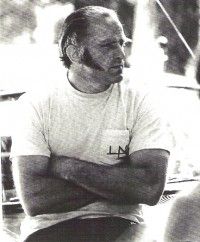 June 27, 2013 – The Birkie Ski Foundation and Telemark Lodge (closes again) – Am I the only one who sees what should happen here, especially as the Birkie’s race calendar continues to fill out with more and more “silent sports” competitions? Yes, they should buy Telemark (!!!!) (Read about it HERE). No, I am not crazy! It is the perfect match and makes sense for the guarantee of the future of the race or races, BSF’s business direction and further growth in their “silent sports” business.
June 27, 2013 – The Birkie Ski Foundation and Telemark Lodge (closes again) – Am I the only one who sees what should happen here, especially as the Birkie’s race calendar continues to fill out with more and more “silent sports” competitions? Yes, they should buy Telemark (!!!!) (Read about it HERE). No, I am not crazy! It is the perfect match and makes sense for the guarantee of the future of the race or races, BSF’s business direction and further growth in their “silent sports” business.




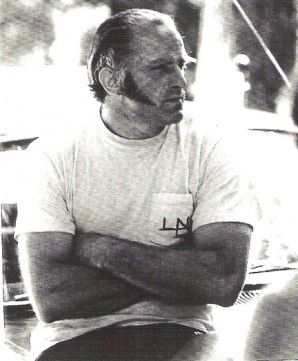

![[P] courtesy of Marty Hall](http://skitrax.com/wp-content/uploads/2012/08/Marty-Hall-Way-I-See-It.jpg)
![XC Ladies (l-r) Kikkan Randall, Liz Stephen, Holly Brooks [P] Matt Whitcomb](http://skitrax.com/wp-content/uploads/2012/08/XC-Ladies-Back-profile.jpg)
![Peter Graves [P] MSA](http://skitrax.com/wp-content/uploads/2012/04/Peter-Graves-P-MSA-100x124.jpg)
![Marty Hall [P] skitrax.com](http://skitrax.com/wp-content/uploads/2012/04/Marty-Hall.4.jpg)
![Marty Hall circa 1980s [P] courtesy of Marty Hall](http://skitrax.com/wp-content/uploads/2012/04/Marty-Hall-Classic-1980.2.jpg)
![Marty Hall [P] courtesy of Marty Hall](http://skitrax.com/wp-content/uploads/2012/04/Marty-Hall.jpg)

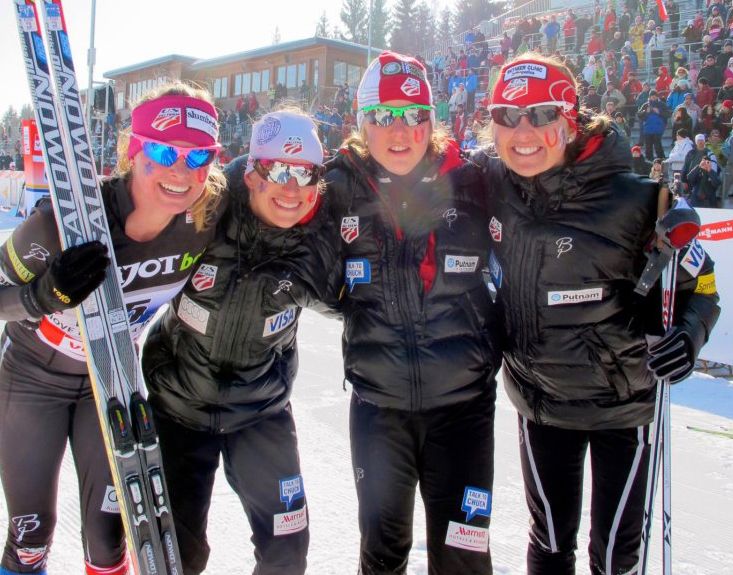
![Marty Hall [P] Kathy Hall](https://skitrax.com/wp-content/uploads/2011/12/Marty-Hall-DSCN0265.2-200x254-125x125.jpg)
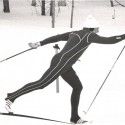
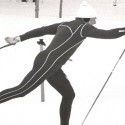
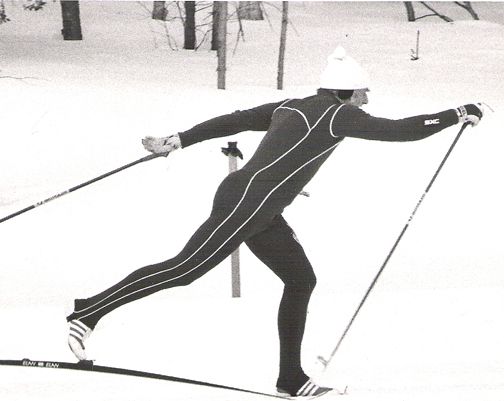
![The program is based in Rossland, BC. [P] Black Jack Ski Club](http://skitrax.com/wp-content/uploads/2011/03/Rosslalnd-200x134.jpg)
![Summer skiing on the Haig Galcier. [P] Black Jack Ski Club](http://skitrax.com/wp-content/uploads/2011/03/Galcier.jpg)
![Nor Ams at Black Jack. [P] Black Jack Ski Club](http://skitrax.com/wp-content/uploads/2011/03/NorAms.jpg)
![Rossland offers great summer training opportunities. [P] Black Jack Ski Club](http://skitrax.com/wp-content/uploads/2011/03/Summer-Training.jpg)
![Rossland is abundant with trails. [P] Black Jack Ski Club](http://skitrax.com/wp-content/uploads/2011/03/Trail-run.jpg)
![Rossland is ideal for ski training. [P] Black Jack Ski Club](http://skitrax.com/wp-content/uploads/2011/02/Skier6.jpg)
![Dave Wood's program is based in Rossland, BC. [P] Black Jack Ski Club](http://skitrax.com/wp-content/uploads/2011/02/Rossland-BC-1-200x114.jpg)
![Summer skiing on the Haig Glacieer. [P] Black Jack Ski Club](http://skitrax.com/wp-content/uploads/2011/02/Summer-skiing-Glacieer5.jpg)
![Rossland hosted a NorAm in December 2010. [P] Black Jack Ski Club](http://skitrax.com/wp-content/uploads/2011/02/NorAms2.jpg)
![Summer training in Rossland. [P] Black Jack Ski Club](http://skitrax.com/wp-content/uploads/2011/02/Summer-training4.jpg)
![Rossland has ideal terrain for dryland training. [P] Black Jack Ski Club](http://skitrax.com/wp-content/uploads/2011/02/Trail-run-3.jpg)
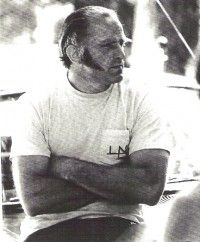
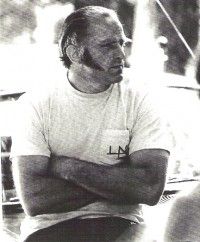
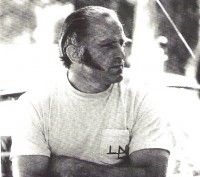
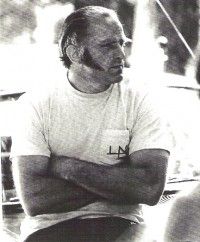
![Bjorger Pettersen at Inuvik, NT in 1972. [P] courtesy of Bjorger Pettersen](http://skitrax.com/wp-content/uploads/2010/12/Pettersen-0001-2.2.jpg)
![Bjorger Pettersen as a junior training at Prince George, BC - circa 1958. [P] courtesy of Bjorger Pettersen](http://skitrax.com/wp-content/uploads/2010/12/Skier-0004.2-200x242.jpg)
![With Prime Minister Pierre Elliott Trudeau at Rideau Hall after first European trip in 1969 (l-r): Anita Allen, Sharon Firth, Roger Allen, Fred Kelly, John Turo, David Cook, Harold Cook, Bjorger Pettersen, Roseanne Allen, Prime Minister Trudeau and Shirley Firth. [P] courtesy of Bjorger Pettersen](http://skitrax.com/wp-content/uploads/2010/12/Group-0003-1.2.jpg)
![Fred Kelly (r) getting ready to start in the Swedish Ski Games and I am still testing waxes - circa 1971. [P] courtesy of Bjorger Pettersen](http://skitrax.com/wp-content/uploads/2010/12/Fred-Kelly-0006.2.jpg)
![The North’s biggest Olympic hopefuls (l-r) Fred “Kelly Express” Kelly, Bjorger Pettersen and Shirley Firth prior to leaving Inuvik for the 1972 Olympic Games in Sapporo, Japan. [P] courtesy of Bjorger Pettersen](http://skitrax.com/wp-content/uploads/2010/12/Kelly-BJ-Firth-0001-1.2.jpg)
![Western Division Chairman John Pettersen (l) and son Bjorger (head coach) at a Canadian Championship - circa 1960s. [P] courtesy of Bjorger Pettersen](http://skitrax.com/wp-content/uploads/2010/12/Pettersen-Dad-0005.2.jpg)
![Bjorger Pettersen home on his Ranch in 2004. [P] courtesy of Bjorger Pettersen](http://skitrax.com/wp-content/uploads/2010/12/Pettersen-Ranch-0002.2-200x182.jpg)
![Marty Hall circa 1970s. [P] courtesy of Marty Hall](http://skitrax.com/wp-content/uploads/2010/12/Marty-Hall-70s.22-200x242.jpg)